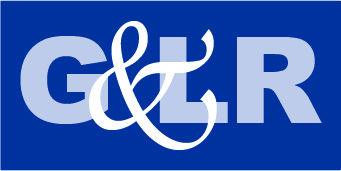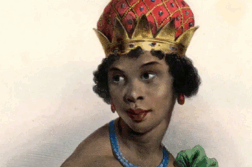
A PLACE OF OUR OWN
Six Spaces That Shaped Queer Women’s Culture
by June Thomas
Seal Press. 247 pages, $30.
FOR LESBIANS of a certain age, reading June Thomas’ A Place of Our Own may bring on a wave of nostalgia, especially the parts about the 1970s and ’80s. Thomas has written a breezy yet substantial history of six types of spaces that have been important to our culture: lesbian bars, feminist bookstores, the softball diamond, lesbian land, feminist sex-toy stores, and vacation destinations. Each sort of space has its own unique vibe, but they all share a history of lesbians trying, and often failing, to make it in a heteronormative capitalistic society while prioritizing lesbian feminist ideals. The efforts were often heroic and the results transformative in the lives of the women who spent time in these spaces.
I personally don’t know of any lesbian who has not been to a lesbian bar. To find a space where everyone knows your name, community abounds, and liquor is served to boot is an irresistible draw. For many, that first trip to a lesbian bar was literally their first time socializing with other lesbians. Its importance cannot be overstated. Back in the day, it was typically your only option for being among “your people.” Today, of course, there are many more options for community, which is one reason why the number of lesbian bars has plummeted from more than 200 in 1987 to fewer than three dozen today. Thomas details the financial challenges of running a lesbian bar from their earliest days on. Many of the owners were truly inspiring in their efforts to keep their bars open.
Feminist bookstores provided community spaces for lesbians who were not necessarily into the bar scene and may have been more political in outlook. The author confides that these bookstores were “my Google, my Craigslist, my Tinder—and, of course, my Amazon.” They taught her about feminist theory, shaped her musical and reading tastes, provided a place for activism to flourish, and sold tickets to concerts. They acted as a clearing house for all sorts of questions, many unrelated to books. They were a home away from home. Like lesbian bars, however, the number of feminist bookstores has dropped—from a high of 135 in the mid-1990s to around two dozen today. Again, we can probably look to the Internet as the major cause of the decline. The bookstore is no longer needed as a source of information about books or as a place to acquire them.
I never played lesbian league softball, but I was well aware of its importance to the community. A softball game was a place to meet friends and celebrate female athleticism, and if you were a player you could bask in the camaraderie. Of course, sometimes that closeness went beyond teammate bonding. Each time a couple got together and then broke up, the resulting tension interfered with the team’s esprit de corps. While most players wanted to win, that was not the primary objective. “Our goal was to showcase some of the lesbian feminist values that we were trying to incorporate into our lives.” What this meant was that everyone who came to practices got to play in the games, regardless of their skill level—a kind of “political” commitment that went beyond the will to win.
Another prominent space starting in the ’70s was “lesbian land” set aside for a variety of purposes. The best known example may be the Michigan Womyn’s Music Festival, but an even deeper commitment was made by lesbians who bought land and set up lesbian-only communes in rural areas of the U.S. These were true pioneers, who risked financial ruin on a dream of successfully managing these communal ranches and farms. Over 150 such communities existed in the ’70s and ’80s, while in the early 2020 around seventy remained, as the original founders have aged or passed away and interest in separatism has waned. At one time, the stretch between Eugene, Oregon, and the California border was home to so many lesbian land projects that it came to be known as the Amazon Trail.
Another safe place for women was the feminist sex toy store. Observes Thomas:“Women’s social and economic liberation was impossible without sexual liberation. And nothing says sexual liberation quite like a vibrator.” Blowing wide open the mysterious world of lesbian sexuality, the woman-owned sex toy store brought compassion, understanding, and a wealth of knowledge to customers who now had access to products that were previously hidden away. As with lesbian bar and bookstore owners, the early pioneers of the feminist sex toy industry faced daunting economic challenges, many unique to their industry. They were often mission-driven enterprises with profit being of secondary interest, but a business has to make a profit to continue.
This well-researched survey of traditional safe spaces for queer women also discusses vacation options such as Province-town and Olivia cruises. Thomas keeps up a brisk pace, balancing research with in-person interviews and a witty style of prose. _______________________________________________________
Anne Laughlin is the author of seven novels, including Money Creek.





